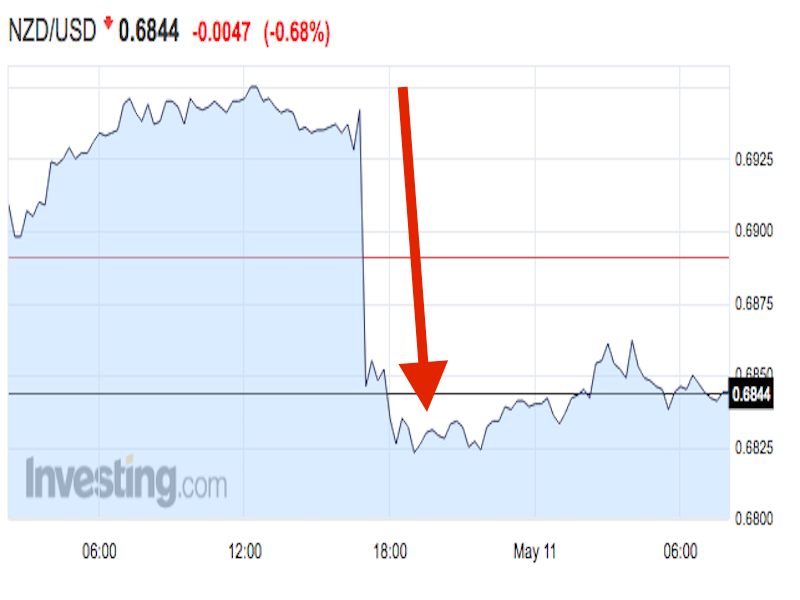The New Zealand dollar fell Thursday following the central bank’s latest monetary policy decision.
The kiwi is down by 0.7% at 0.6845 dollar as of 8:10 a.m. ET after falling by as much as 1.3%. It is at the lowest level since June 2016.
The Reserve Bank of New Zealand held its key rate at 1.75%, as most analysts were expecting, and lowered its inflation forecast.
“We are maintaining our view that the RBNZ will keep its benchmark policy rate unchanged for the rest of 2017 as the central bank seeks to balance its aim of achieving goals that are opposing to each other,” analysts at BMI Research said in a note.
“On the one hand, achieving the medium-term inflation objective of 1.0-3.0% remains a priority for the RBNZ, but on the other hand, the RBNZ is still concerned about financial instability risks stemming from still-elevated house prices.”
As for the rest of the world, here's the scoreboard as of 8:11 a.m. ET:
- The British pound is down by 0.7% at 1.2854 against the dollar after the Bank of England kept its key rate at a record low of 0.25% and its QE program capped at £435 billion. Moreover, manufacturing production fell by 0.6% month-over-month in March, below expectations of a 0.2% drop. The euro is little changed at 1.0860 against the dollar. Earlier, Germany's Wholesale Price Index rose by 0.3% month-over-month in April, above expectations of 0.1%, and by 4.7% in year-over-year terms. The Russian ruble is up by 0.6% at 57.1333 per dollar, while Brent crude oil, the international benchmark, is higher by 1.4% at $50.89 per barrel. The US dollar index is little changed at 99.71.

